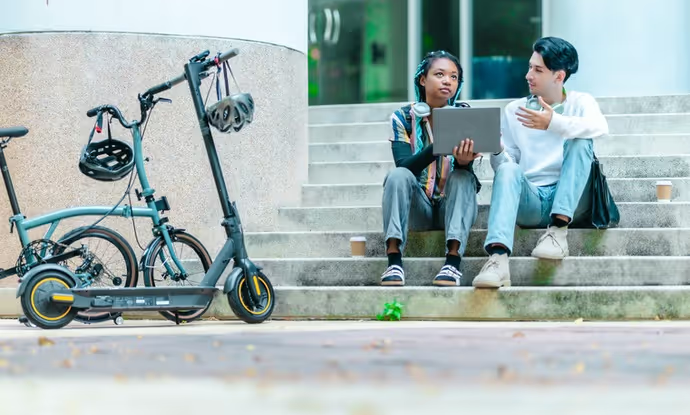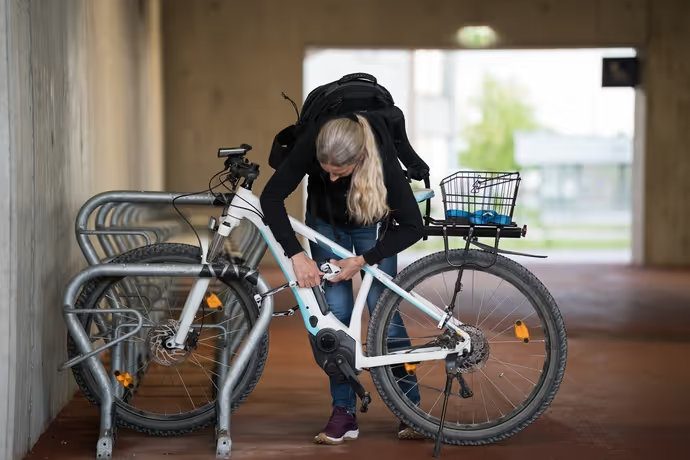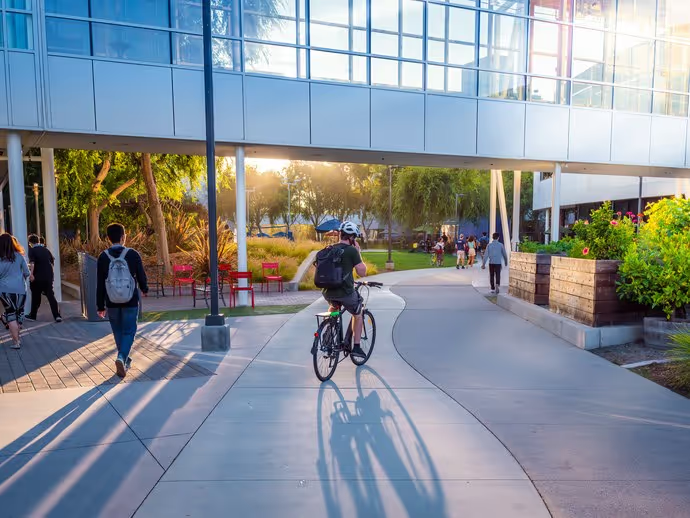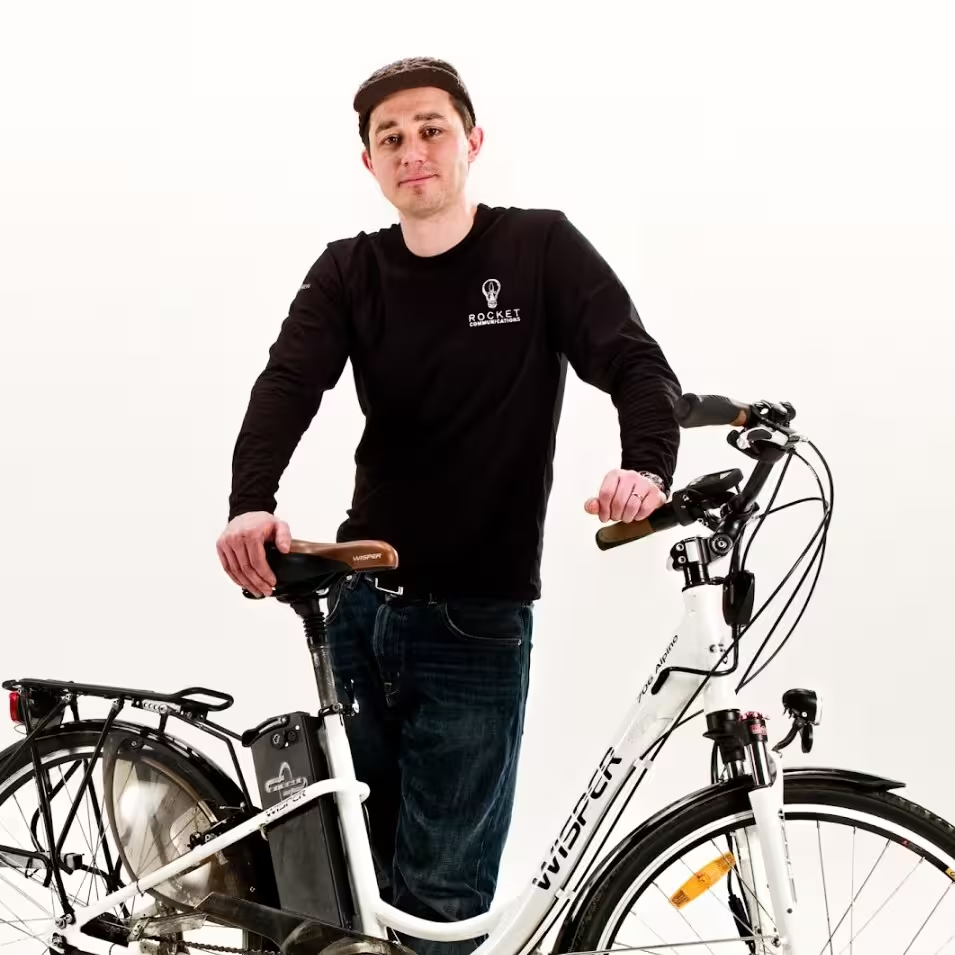Make theft the exception: a campus guide to protecting bikes, e-bikes & e-scooters

E-bikes and e-scooters have super-charged campus mobility—unfortunately, they've also shifted theft patterns. The upshot: with a data-led plan and a community tool that students actually use, you can bend the curve fast.
529 Garage is the world's largest bike registry and recovery network, now topping 3.1 million searchable bikes. Communities that fully deploy it see real results—Vancouver drove theft down by 70% after embracing the program; the first two years alone delivered a 30% drop.
What ASU learned (and what your campus can act on)
Arizona State University's police and campus partners took a Problem-Oriented Policing (POP) approach—scan the problem, analyze the data, design responses, assess and iterate—and built a cross-department working group to tackle personal-mobility theft. What they discovered challenges conventional wisdom about campus security.
Most universities assume bike theft is an opportunistic crime that happens under cover of darkness. ASU's data revealed the opposite: most thefts happen in broad daylight between 6 am and 6 pm, when racks are full and thieves can blend in with normal campus activity. Even more surprising, e-scooters have become the primary target, surpassing traditional bikes, with e-bikes ranking third.
The security measures campuses had been relying on weren't working. Cable locks proved to be the weak link—most thefts involved easily-cut cables or poor locking technique. Meanwhile, only 6.8% of stolen items were registered, making recovery and prosecution nearly impossible.
The tactics they adopted
ASU's response was systematic rather than reactive. They deployed a Real-Time Analysis Center (RTAC) that links campus cameras and license plate readers to cases, allowing them to tie repeat offenders across incidents and build stronger prosecutions. They made environmental tweaks—moving and resizing racks, relocating seating, adding "Walk Ambassadors," and aiming cameras for clear lines of sight.
Perhaps most importantly, they launched a "Register & U-Lock" campus push with signage at racks, residence-hall campaigns, and RA training, while expanding their bait device program with GPS-equipped e-scooters to deter and catch organized thieves. They adopted 529 Garage bike registration and implemented pattern analysis to cross-check suspects and focus patrols on "hot" racks.
(ASU's POP pedigree runs deep—the national center for Problem-Oriented Policing is housed at ASU, led by Prof. Michael Scott.)
The campus playbook
Understanding your theft landscape (Weeks 0–4)
Start by mapping the real problem, not the reported one. Pin-map every reported theft for the past 18–24 months, noting time of day, rack location, device type, and lock type. But reported thefts are just the tip of the iceberg. Send surveys to residence halls asking about unreported incidents—you'll likely discover your actual theft rate is 2-3x higher than police reports suggest.
Walk your highest-risk locations in person. Once you've identified your top-10 theft hotspots, visit each rack and document camera coverage, lighting quality, how concealed the area is from foot traffic, and whether thieves could use bolt cutters unobserved. These physical factors often matter more than the number of bikes parked there.
Establish baseline metrics that matter. Track weekly theft rates, the mix of devices being stolen (bikes vs. e-bikes vs. e-scooters), U-lock vs. cable lock usage, registration percentages, recovery rates, and how long recoveries take. Without these baselines, you won't know if your interventions are working.
Deploying systematic countermeasures (Weeks 4–12)
Policy & governance foundations
Create a unified e-mobility policy before you do anything else. Define where devices can be ridden and parked, set charging standards, and get Residence Life, Parking & Transportation, Risk Management, Fire Safety, and Campus Police aligned on enforcement. Most theft prevention fails because departments work at cross-purposes with conflicting rules that students ignore and staff can't enforce consistently.
Mandate U-lock standards and ban cable-only locks. Require 13mm+ hardened shackles and allow secondary cables only for securing wheels or seats to the main U-lock. Cable locks are defeated in seconds—they're not security devices, they're theft enablers.

Infrastructure that actually works
Redesign your parking infrastructure for the devices students actually use. Traditional bike racks weren't designed for e-scooters, which need rails that allow U-locks through the stem and deck to prevent "lift-and-go" theft. Replace racks in low-visibility corners where thieves can work unobserved, and ensure space for e-bikes with wider handlebars and cargo bikes. When planning new installations, prioritize locations with clear camera sightlines—a convenient rack that's invisible to security becomes a theft magnet.
Make registration unavoidable with strategic signage. Post simple, clear placards at every rack: "U-Lock Zone. Register here → [QR code]" and "Scan to register in 2 minutes." The easier you make it, and the more visible the messaging, the more students will comply.
Operations & enforcement that creates real deterrence
Use bait devices strategically for both arrests and psychological deterrence. Deploy GPS-equipped bait bikes and e-scooters, occasionally publicizing the program but keeping specific timing and locations unpredictable. Universities like Princeton and University of Colorado report that even a small bait program creates outsized deterrence because thieves can't tell which devices are monitored. The psychological effect of "any bike could be bait" often matters more than the actual number of devices you deploy.
Optimize your existing camera infrastructure. Many campuses have cameras that are poorly positioned for bike rack coverage, missing crucial theft evidence. Aim, focus, and light your highest-risk racks, then feed alerts to your dispatch system to enable faster response and link repeat offenders across incidents.
Increase visible presence during peak theft hours. Schedule staggered officer or aide checks at hotspot racks between 10am–4pm, when most thefts occur. Thieves rely on blending in with normal campus activity—regular security presence disrupts this assumption.

Community engagement that actually changes behavior
Embed security education in existing touchpoints. Run 10-minute "Lock & Register" micro-sessions in every residence hall during the first two weeks of school. Set up tables at move-in, housing fairs, and bike valet points. New students are most receptive to security messaging before they develop bad habits.
Make good security affordable and immediate. Subsidize or bulk-purchase U-locks, pairing every sale with on-the-spot 529 registration and Shield application. Removing the cost barrier to proper security eliminates the main excuse for using inadequate locks.
Measuring progress and adapting (Week 12+, then quarterly)
Create transparency with a public dashboard. Track and publish theft trends, registration percentages, U-lock compliance, and recovery rates. Transparency builds community buy-in and creates accountability for continued progress.
Let your data guide your next moves. If thefts cluster at specific racks after dark, prioritize lighting and camera improvements there first. If e-scooters dominate your losses, add scooter-specific infrastructure and targeted messaging. Theft patterns shift as you address obvious vulnerabilities—your response needs to evolve with them.
How 529 Garage solves the coordination problem
Campus theft prevention fails when it relies on students to remember complex procedures or when recovery depends on manual processes that don't scale. 529 Garage addresses these coordination challenges with tools designed for how people actually behave.
Registration that students actually complete. The web and mobile app take 2 minutes to use, and your campus gets a branded registration portal, analytics dashboard, bulk management tools, and a purpose-built 529 Campus app for events.
Deterrence that's visible and immediate. The tamper-resistant 529 Shield with QR code both marks property as registered and speeds owner contact when something's parked improperly or impounded by facilities.
Recovery that works at scale. "Missing bike" alerts ping nearby 529 members and partner organizations automatically. Law enforcement can query partial serial numbers and match impounds to owners quickly—active campus and police partners across North America rely on this daily.
A system that works beyond campus boundaries. From Vancouver's city-wide turnaround to hundreds of campus programs, the model scales and keeps working off-campus where theft risk often spikes for students.

90-day implementation timeline
Days 1–30: Foundation and baseline
Convene your cross-department working group (Police, Parking & Transportation Services, Residence Life, Fire Safety, Communications, IT). Map the last two years of thefts and identify your top-10 problem racks and highest-risk e-scooter locations. Tune and aim cameras at those racks, plan 1–2 bait device deployments, and order U-locks in bulk, 529 Shields, rack signage, and charging lockers for two pilot sites.
Days 31–60: Launch and early intervention
Execute your Welcome Week blitz: pop-up "Lock & Register" events at residence halls and student centers, RA-led micro-sessions, and "U-Lock Zone" messaging at every rack. Turn on your branded 529 portal and host 3–5 registration events using the 529 Campus app. Begin bait device deployments and start hot-spot security checks during peak hours (10am–4pm).
Days 61–90: Infrastructure hardening and iteration
Install and realign e-scooter racks and charging lockers at your two pilot sites. Adjust seating and landscaping for better camera sightlines. Post your final rack signage combining registration messaging with U-lock requirements. Publish your dashboard weekly and brief stakeholders monthly on progress and needed adjustments.
Success metrics for semester one
- 50% of devices registered at high-risk locations
- 80% U-lock compliance in spot-checks
- ≥25–30% reduction in reported theft vs. prior semester
- Rising recovery rates as registration increases
- ≥3 linked-case prosecutions via pattern analysis (where applicable)
Ready-to-use campus resources
Downloadable signage and materials: The 529 Garage artwork page provides print-ready rack signs (PDF/EPS), brochures, infographics, and QR code assets you can integrate into your campus-branded materials.
Orientation content:
- Register your ride (bike/e-bike/e-scooter)
- U-lock the frame to the rack (never cable-only)
- Add the Shield (QR helps us reach you fast)
- If it goes missing, start a 529 alert immediately
Residence hall email template:
Subject: Lock it right. Register it now.
Welcome! Campus racks fill up fast—and thieves notice. Use a U-lock (no cable-only), register in 2 minutes and pick up your free 529 Shield at [event]. If something goes missing, start a 529 alert and we'll rally the community and police.
Procurement specifications
U-locks: 13mm+ hardened shackle, anti-rotation double-bolt, optional wheel/seat tether
Racks: Inverted-U or scooter-rail designs, tamper-resistant anchors, 36–42″ spacing, camera-visible placement
Charging lockers: Weather-protected, lockable, metered power in secured areas
Frequently asked questions
Do we really need scooter-specific parking?
Yes—scooters are now the primary target on many campuses. Rails that allow a U-lock through the scooter's stem/deck reduce "lift-and-go" theft and keep devices out of buildings, lowering fire risk simultaneously.
What about cable locks?
Cables are for accessories only. Most campus thefts defeat cable locks in seconds. Push U-locks everywhere, teach proper frame-to-rack technique, and reinforce the message with rack signage.
Will students actually register their devices?
They do when registration is fast, visible, and tied to clear benefits (Shield, recovery network, quick contact for impounds). Campuses across the US embed 529 registration in transportation pages and events because it demonstrably works.
Does bait really provide deterrence?
Yes. Universities using bait bikes and scooters report both arrests and deterrent effects. The key is pairing bait programs with camera coverage and pattern analysis for maximum impact.
Maintaining momentum with Problem-Oriented Policing
Make this a continuous improvement loop rather than a one-time project:
- Scanning: Keep your theft map live and visible to stakeholders
- Analysis: Monitor how the mix of racks, devices, and locks evolves
- Response: Adjust infrastructure, cameras, and patrol patterns based on data
- Assessment: Publish metrics regularly; double down on what works, fix what doesn't
-
- ASU's leadership in Problem-Oriented Policing provides an excellent model for this approach.
For detailed implementation support, campus tools, and pricing information, visit 529 Garage for Schools & Universities. For examples of successful deployments, see case studies from University of Oregon and peer institutions including Princeton and University of Colorado Boulder.


